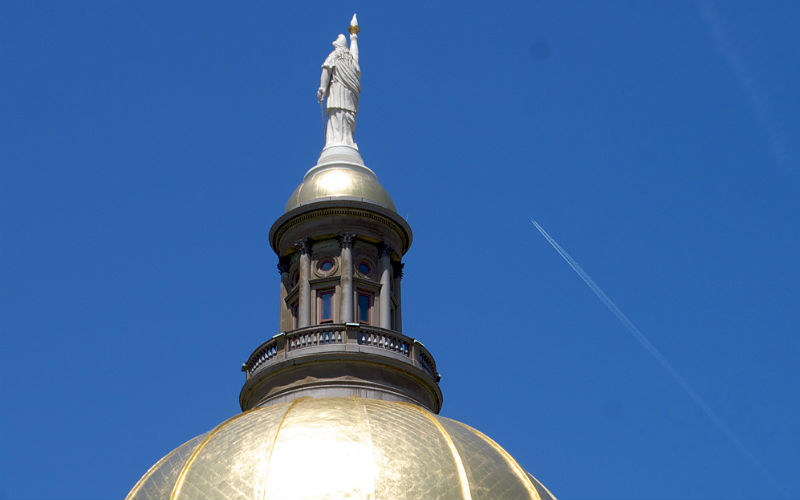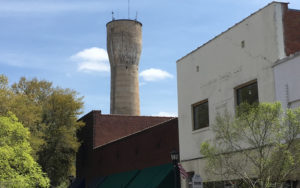
The only clue we’ll give you to this week’s Mystery Photo is it is not in South Carolina. So what is it and where is it? Send your best guess – plus your name and hometown – to feedback@statehousereport.com. In the subject line, write: “Mystery Photo guess.”
Our previous Mystery Photo
 The March 30 Mystery Photo may have been the best ever (so far) because it was one of three of the same thing. Last week’s photo shows the top of a “standpipe” water tower in Walterboro. But wait, there are two other similar structures in South Carolina — one in nearby Allendale and another in the Upstate in Belton.
The March 30 Mystery Photo may have been the best ever (so far) because it was one of three of the same thing. Last week’s photo shows the top of a “standpipe” water tower in Walterboro. But wait, there are two other similar structures in South Carolina — one in nearby Allendale and another in the Upstate in Belton.
As you might figure, we got guesses for all three towers — so congrats to all for recognizing the familiar shape. [We learned something too — we knew about the similar towers in Walterboro and Allendale, but didn’t know Belton had one also!]
A big tip of the hat goes to those who identified the tower correctly on the first try: Dale Rhodes of Richmond, Va., George Graf of Palmyra, Va.; Tray Hunter of Bluffton, Steve Willis of Lancaster, Charles Strickland of Edisto; Jay Altman of Columbia; and Diane Mathews of Walterboro. A nod also to three who got it right on a second try: Faith Line of Anderson; Daniel Prohaska of Moncks Corner and Philip Cromer of Beaufort.
Graf provided some more detail: “According to altlasobscura.com, it took a Boston engineering firm a couple of years to build the 133-foot tower, which was completed in 1915, and it employs what’s known as a standpipe system. 100,000 gallons of water is stored in the top and, using plain old gravity to pressurize the water up above (with a little help from hydro pumps), the water is pushed down through the pipe system and out to homes and businesses. The Walterboro Water Tower is one of only three standpipe systems in the state of South Carolina.
“There is a small door at the base of the tower that leads to a space that was once used as a county jail. Long since out of penal service, there are six small cells, and just a couple of windows. Some say that these cells later served as sleeping quarters for stranded travelers who needed a place to stay for a night.”
Send us a mystery: If you have a photo that you believe will stump readers, send it along (but make sure to tell us what it is because it may stump us too!) Send to: feedback@statehousereport.com and mark it as a photo submission. Thanks.















 We Can Do Better, South Carolina!
We Can Do Better, South Carolina!